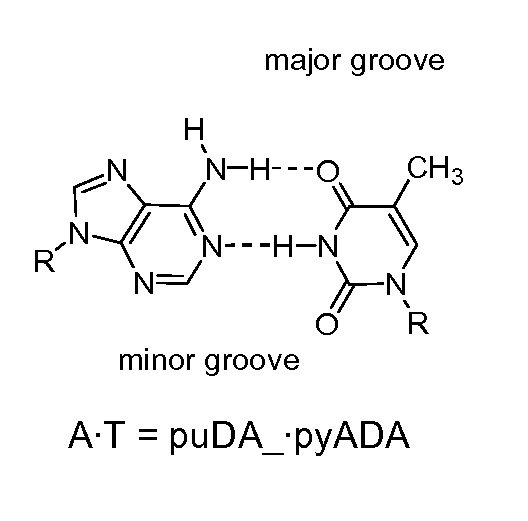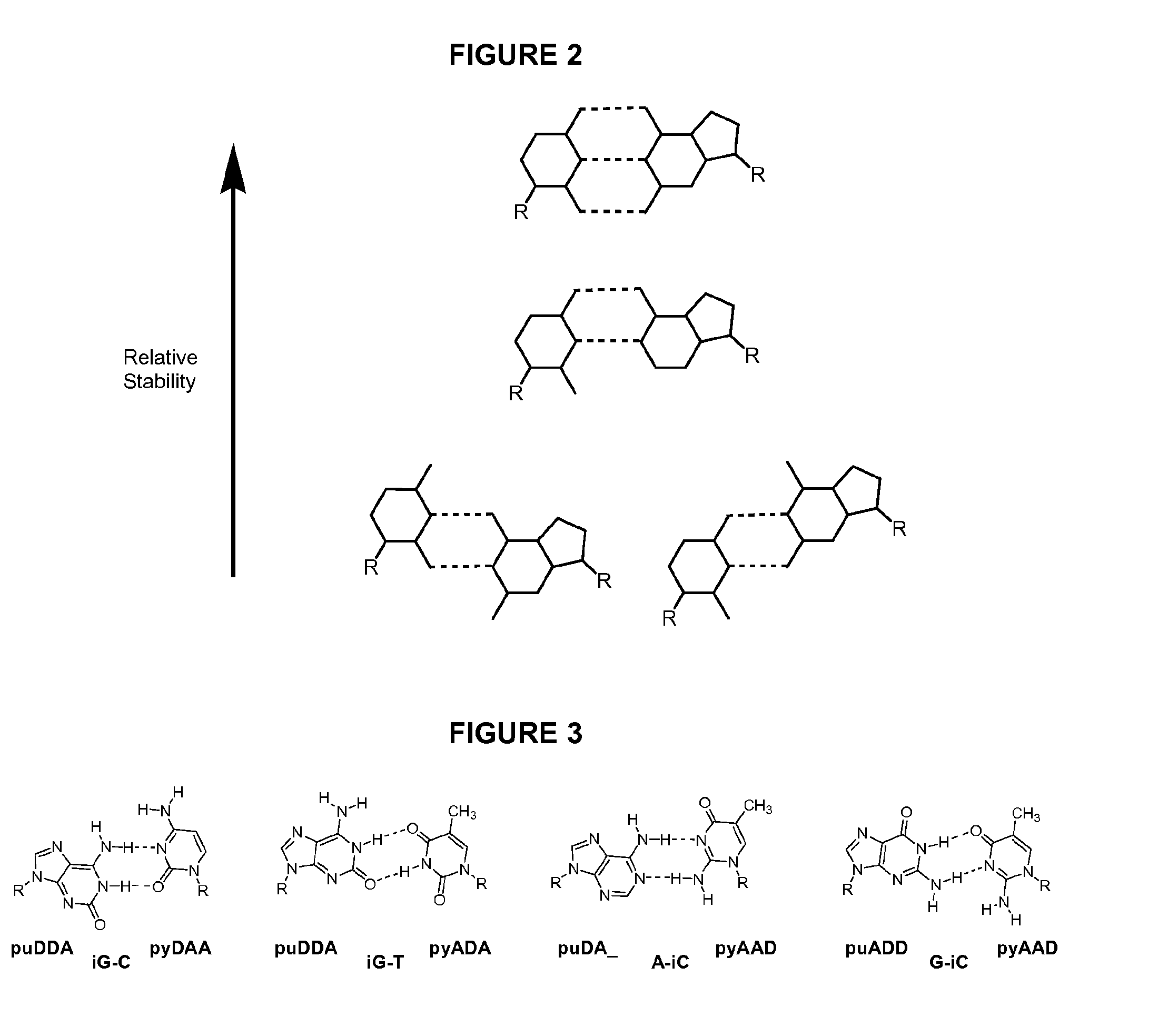Degenerate Nucleobase Analogs
a nucleobase analog and degenerate technology, applied in the field of nucleic acid identification, can solve the problems of melting curve profile, confounding accurate detection and characterization of the target polymorphic locus, and one or more polymorphic loci
- Summary
- Abstract
- Description
- Claims
- Application Information
AI Technical Summary
Benefits of technology
Problems solved by technology
Method used
Image
Examples
examples of specific embodiments
of the Invention
[0077]The present invention relates to novel nucleobase oligomers (or oligonucleotides) that hybridize to a corresponding binding region of a polynucleotide template. The nucleobase oligomers of the invention are useful for hybridization to a polynucleotide template having multiple polymorphic loci (sites where polymorphisms give rise to multiple genetic variants). When multiple polymorphic loci are present in close proximity, particularly within a region to which one wishes to have an oligonucleotide probe or primer hybridize, the presence of one polymorphic locus may complicate detection, identification or characterization of another polymorphic locus. For example, a common method of detecting a particular allele utilizes melting curve analysis to determine the particular nucleotide sequence at a specific target polymorphic locus. Melting curve analysis utilizes a hybridization probe that, typically, is exactly complementary to the nucleotide sequence of one allele...
example 1
Utility of puDDA and pyAAD Nucleobases Opposite Degenerate Sites
[0215]The reagents 5-methylisocytosine (F) and isoguanine (J) were used in experiments for thermally denaturing a dye-labeled oligodeoxyribonucleotide duplex with a single variable position containing A, C, G, T, F, or J. These experiments were used to characterize probe hybridization when F or J was paired opposite the other nucleobases. Thermal denaturation experiments yielded comparable melting temperatures (Tms) for duplexes with F opposite A or G, as well as J opposite C or T. The mean Tm of these 15 mer duplexes was only 2.9° C. lower than the mean Tm observed for the two duplexes with A opposite T at the variable duplex position.
[0216]The utility of puDDA (F) and pyAAD (J) nucleobases opposite degenerate sites was demonstrated in melting point experiments using a 15 mer oligodeoxynucleotide duplex comprising the following two sequences:
5′-FAM-CAGTAGGN1TCTCCCG-BHQ-3′(SEQ ID NO: 1)3′-GTCATCCN2AGAGGGC-5′(SEQ ID NO: ...
example 2
Genotyping Using Degenerate Nucleobase Probes
[0224]A degenerate nucleobase probe according to the present invention was generated for the purpose of distinguishing HCV genotype 2 from all other genotypes. The probe sequence was designed to be useful in a probe melting assay following a PCR amplification step of the 5′-UTR of the HCV genome. Such an assay would use melting temperatures (Tms) of a degenerate probe (J Probe, Table 4) bound to a target sequence to detect if that sequence is genotype 2 or non-genotype 2. An examination of melting temperatures against synthetic DNA oligonucleotides was used to verify the utility of the J Probe.
[0225]Synthesis of Oligonucleotides. Oligodeoxyribonucleotides were synthesized on a 394 DNA synthesizer (Applied Biosystems) and purified by reversed phase HPLC using the Wave system (Transgenomic). ODN mass was verified as within 0.5% of the expected mass by MALDI-TOF mass spectrometry using a Voyager-DE (Applied Biosystems). ODN purity was >93% b...
PUM
| Property | Measurement | Unit |
|---|---|---|
| Temperature | aaaaa | aaaaa |
| Temperature | aaaaa | aaaaa |
| Temperature | aaaaa | aaaaa |
Abstract
Description
Claims
Application Information
 Login to View More
Login to View More - R&D
- Intellectual Property
- Life Sciences
- Materials
- Tech Scout
- Unparalleled Data Quality
- Higher Quality Content
- 60% Fewer Hallucinations
Browse by: Latest US Patents, China's latest patents, Technical Efficacy Thesaurus, Application Domain, Technology Topic, Popular Technical Reports.
© 2025 PatSnap. All rights reserved.Legal|Privacy policy|Modern Slavery Act Transparency Statement|Sitemap|About US| Contact US: help@patsnap.com



